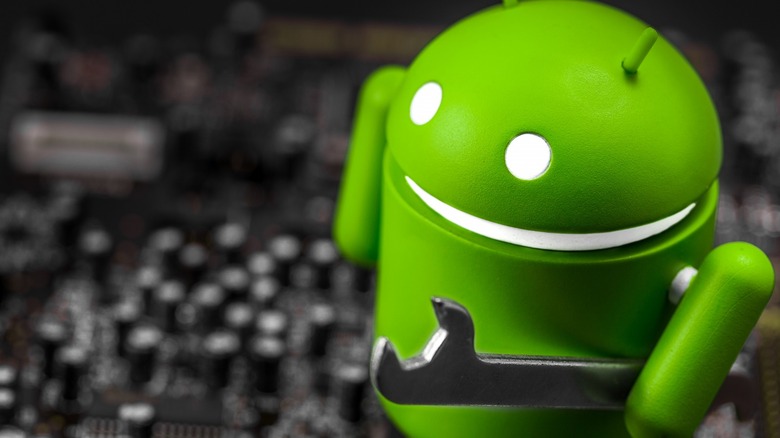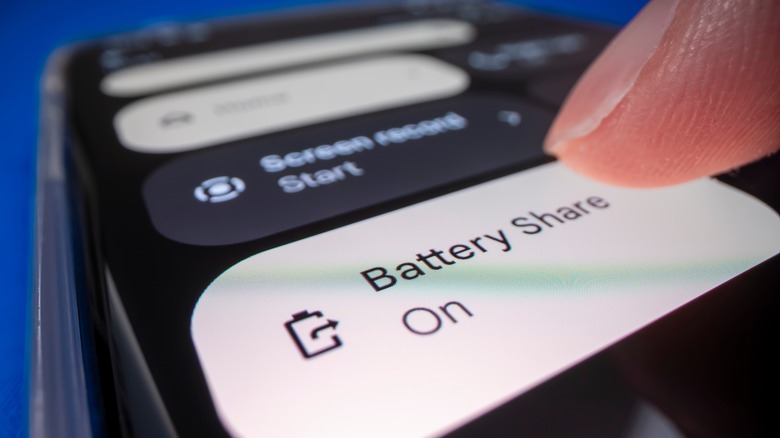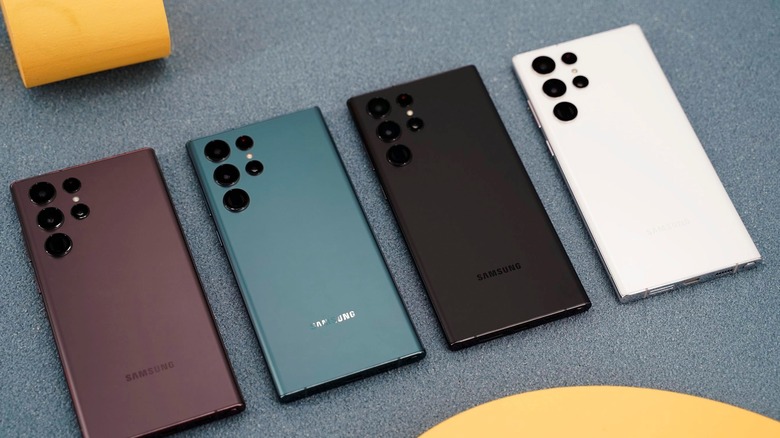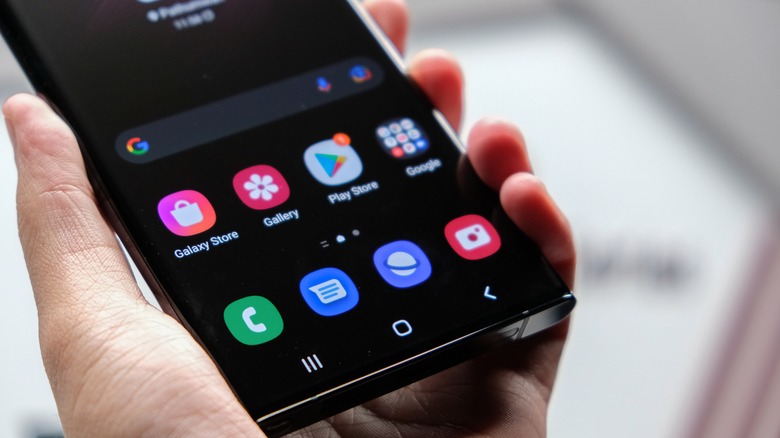How To Edit The Quick Settings Menu On Your Android Phone And Why You Might Want To
We may receive a commission on purchases made from links.
If you own an Android phone, it's safe to say that you're familiar with the quick settings feature even if you never learned its proper name. Swipe down from the top of your phone's screen, then do that a second time; a menu will open that features bubbles, buttons, or tiles with different settings and tools, such as airplane mode and Wi-Fi. Tap these bubbles (or tiles, depending on the UI) and they'll either become highlighted, indicating they're active, or they'll turn gray, indicating that they've been disabled.
Quick settings are purely there for convenience; they make it very easy to quickly turn the phone's flashlight on, turn Bluetooth off, enable a VPN connection, switch the display over to a low blue light mode, and many other things. The exact items featured in your phone's quick settings panel will depend on the manufacturer and which version of its user interface (such as One UI on Galaxy phones) the device is running.
Regardless, all Android phones have something in common when it comes to quick settings: you can edit them yourself, and there's a good reason you should do so. While we can't provide specific directions for every Android phone on the market, the process is more or less the same on all of them.
How to edit the Android quick settings menu on Pixel phones
If you have a Pixel smartphone, the quick settings will look like tiles rather than bubbles due to the UI that Google uses. That's fine — the style of the settings has no impact on how the buttons work. Swipe down from the top of the screen to view a few of the quick settings, then swipe down again to view them all. Tap a setting to enable or disable it; long-press it to see other options that may be available. To edit the settings, follow a few short steps detailed by Google in a support document.
- Swipe down twice on the Pixel screen to reveal the full quick settings menu.
- Scroll down and tap the Edit button.
- Long-press the setting you're interested in.
- Drag the setting where indicated to add or remove it from quick settings.
Keep in mind that your Pixel phone must be running at least Android 11 for these steps to work, according to Google. There are many quick settings available on Pixel smartphones, including ones related to connectivity, location data, accessibility, power, and more. You can edit the quick settings tiles whenever you like, such as after installing an app that comes with an optional quick setting.
How to edit the Android quick settings menu on Galaxy phones
If you have a Galaxy smartphone, the quick settings will look like round buttons (called bubbles) rather than tiles. The feature is effectively the same as the one found on Google's Pixel smartphones, however, and you can edit the quick settings menu in the same manner. The only big difference is that you'll likely see a Bixby bubble by default, which isn't surprising since that's Samsung's alternative to Google Assistant.
- Swipe down from the top of the screen twice to open the full quick settings panel.
- Tap the button with three vertical dots to open the options menu.
- Tap the "Edit buttons" option. Samsung says some Galaxy phones say "Button order" instead.
- Long-press a bubble to select it, then drag it to whenever you'd like it.
- Swipe left and tap the "+" button to add new quick settings.
- Long-press the new quick setting bubble and drag it wherever you'd like it within the quick settings panel.
- Tap Done to save the changes.
Note that your Galaxy smartphone must be running One UI 3.1 at minimum for all of these features to work, according to the company. One UI is Samsung's custom skin over Android that, for example, gives it the bubble appearance while other phones like the Pixel may feature tiles. Samsung released One UI 3 alongside Android 11, so as long as your phone wasn't purchased more than a few years ago, it has likely been updated to at least One UI version 3.1 and these steps should work just fine.
Why you should edit the Android quick settings on your phone
Android manufacturers put commonly-used features and settings in the quick settings menu by default; this is because they're applicable to the greatest number of users. For example, everyone will need to turn on airplane mode or turn off Wi-Fi at some point, so putting both of those settings within the quick settings panel means users only need to swipe down a couple of times, then tap the corresponding tile or button.
However, you may want to edit this menu to tailor it to your own specific needs and usage habits to make common tasks easier and faster. For example, if you're subscribed to a VPN service that offers its own app, there's a good chance you can add it as a quick setting tile or button. By doing so, you'll be able to connect to and disconnect from the VPN rapidly by swiping down and tapping the button.
You can also remove quick setting tiles and buttons related to features and tools you never or rarely use — this way, you won't find yourself swiping through multiple screens of options in search of the specific setting you want. For example, the low blue light feature is commonly included in the quick settings by default, but if you never enable it, there's no good reason to keep it in the panel. The feature will still be available after you remove it, you'll just have to go hunting through the Settings app to find it.



